MARTIN SCORSESE'S FILM SCHOOL: THE 85 FILMS YOU NEED TO SEE TO KNOW ANYTHING ABOUT FILM
With 11 nominations and five wins for Hugo at the 2012 Oscars, Martin Scorsese remains one of the most influential directors in Hollywood. But what influenced him? Here’s an A-Z list of the films that mattered to Scorsese.
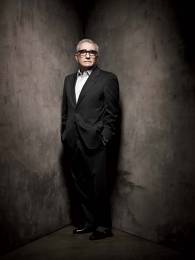
Interviewing Martin Scorsese is like taking a master class in film.Fast Company’s four-hour interview with the director for the December-January cover story was ostensibly about his career, and how he had been able to stay so creative through years of battling studios. But the Hugodirector punctuated everything he said with references to movies: 85 of them, in fact, all listed below.
Some of the movies he discussed (note: the descriptions for these are below in quotes, denoting his own words). Others he just mentioned (noted below with short plot descriptions and no quotes). But the cumulative total reflects a life lived entirely within the confines of movie making, from his days as a young asthmatic child watching a tiny screen in Queens, New York to today, when Scorsese is as productive as he’s ever been in his career--and more revered than ever by the industry that once regarded him as a troublesome outsider. Hugo leads the Academy Award nominations with 11 nods, including Best Picture and Best Director. Several Oscar pundits believe he’ll nab his second Directing win. If so, he owes a lot to movies like the ones below.
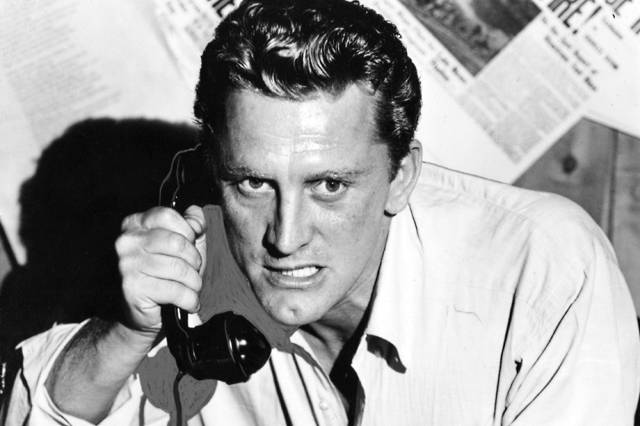
Ace in the Hole: "This Billy Wilder film was so tough and brutal in its cynicism that it died a sudden death at the box office, and they re-released it under the title Big Carnival, which didn’t help. Chuck Tatum is a reporter who’s very modern--he’ll do anything to get the story, to make up the story! He risks not only his reputation, but also the life of this guy who’s trapped in the mine." 1951
All That Heaven Allows: In this Douglas Sirk melodrama, Rock Hudson plays a gardener who falls in love with a society widow played by Jane Wyman. Scandale! 1955
America, America: Drawn directly from director Elia Kazan’s family history, this film offers a passionate, intense view of the challenges faced by Greek immigrants at the end of the 19th century. 1963
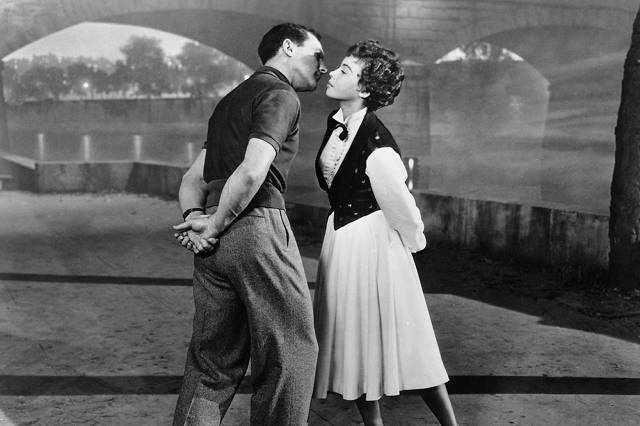
An American in Paris: This Vincente Minnelli film, with Gene Kelly, picked up the idea of stopping within a film for a dance from The Red Shoes. 1951
Apocalypse Now: This Francis Ford Coppola masterpiece is from a period when directors like Brian DePalma, John Milius, Paul Schrader, Scorsese and others had great freedom--freedom that they then lost. 1979
Arsenic and Old Lace: Scorsese is a big fan of many Frank Capra movies, and this Cary Grant vehicle is one of several that he’s enjoyed with his family at his office screening room. 1944
The Bad and the Beautiful: Vincente Minnelli directed this film about a cynical Hollywood mogul trying to make a comeback. It stars Kirk Douglas, Lana Turner, Walter Pidgeon, and Dick Powell. 1952
The Band Wagon: “It’s my favorite of the Vincente Minnelli musicals. I love the storyline that combines Faust and a musical comedy, and the disaster that results. Tony Hunter, the lead character played by Fred Astaire, is a former vaudeville dancer whose time has passed, and who’s trying to make it on Broadway, which is a very different medium of course. By the time the movie was made, the popularity of the Astaire/Rogers films had waned, raising the question of what are you going to do with Fred Astaire in Technicolor? So, really, Tony Hunter is Fred Astaire--his whole reputation is on the line, and so was Fred Astaire’s.” 1953
Born on the Fourth of July: Produced by Universal Pictures under Tom Pollock and Casey Silver, this Tom Cruise movie (directed by Oliver Stone) was an example of how that studio “wanted to make special pictures,” says Scorsese. 1989
Cape Fear: As he once explained to Steven Spielberg over dinner in Tribeca, one of Scorsese’s fears about directing a remake of this film was that, “The original was so good. I mean, you’ve got Gregory Peck, Robert Mitchum, Polly Bergen, it’s terrific!” 1962
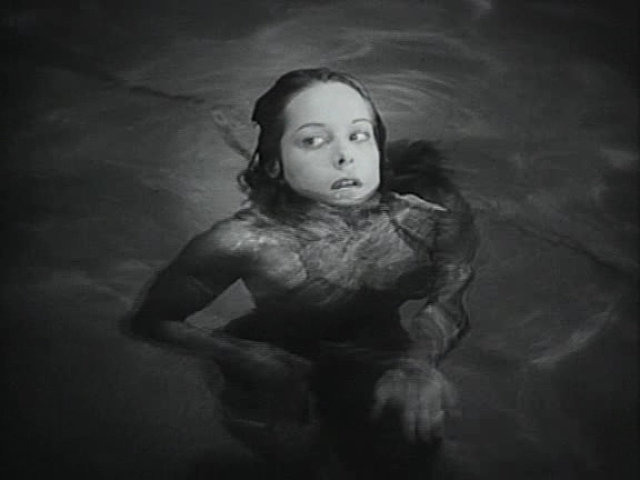
Cat People: Simone Simon plays a woman who fears that she might turn into a panther and kill. It sounds corny, but the psychological thrills that directors Jacques Tourneur got out of his measly $150,000 budget make this a fascinating movie, with amazing lighting. 1942
Caught: “There are certain styles I had trouble with at first, like some of Max Ophuls’ films. It took me till I was into my thirties to get The Earrings of Madame de…, for example. But I didn’t have trouble with this one, which I saw in a theater and which is kind of based on Howard Hughes [protagonist of The Aviator].” 1949
Citizen Kane: “Orson Welles was a force of nature, who just came in and wiped the slate clean. And Citizen Kane is the greatest risk-taking of all time in film. I don’t think anything had even seen anything quite like it. The photography was also unlike anything we’d seen. The odd coldness of the filmmaker towards the character reflects his own egomania and power, and yet a powerful empathy for all of them--it’s very interesting. It still holds up, and it’s still shocking. It takes storytelling and throws it up in the air.” 1941
The Conversation: Gene Hackman stars in this thrilled directed by Scorsese’s friend, Francis Ford Coppola. It’s a classic example of studio risk-taking in the early 1970s. 1974
Dial M for Murder: When discussing the creation of Hugo, Scorsese referred to this Hitchcock film as an example of other directors who have tangled with 3-D over the years. In its original release most theaters only showed it in 2-D; now the 3-D version pops up in theaters from time to time.1954
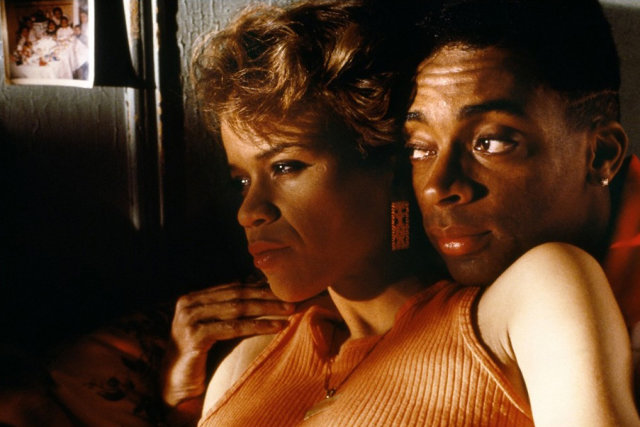
Do The Right Thing: Spike Lee’s film was the kind of risky production that drew Scorsese to Universal Pictures when it was run by Casey Silver and Tom Pollack. “Then Pollock left,” says Scorsese, “and it all changed.” 1989
Duel in the Sun: Scorsese went to see this movie, which some critics called “Lust in the Dust,” when he was 4 years old. Jennifer Jones falls hard for a villainous Gregory Peck in this lush King Vidor picture. A poster of the movie hangs in Scorsese’s offices. 1946
The Four Horseman of the Apocalypse: Rex Ingram made this movie, in which Rudolph Valentino dances the tango. Ingram stopped making films when sound came in. Michael Powell’s father worked for Ingram; living in that milieu gave Michael the cultural knowledge that informed his own movies like The Red Shoes. 1921

Europa ’51: “After making The Flowers of St. Francis, Rossellini asked, what would a modern-day saint be like? I think they based it on Simone Weil, and Ingrid Bergman played the part. It really takes everything we’re dealing with today, whether it’s revolutions in other countries or people trying to change their lifestyles, and it’s all there in that film. The character tries everything, because she has a tragedy in her family that really changes her, so she tries politics and even working in a factory, and in the end it has a very moving resolution.” [Also known as The Greatest Love] 1952
Faces: “[Director John] Cassavetes went to Hollywood to shoot films like A Child is Waiting and Too Late Blues, and after Too Late Blues he became disenchanted. Those of us in the New York scene, we kept asking, 'What’s Cassavetes doing? What’s he up to?' And he was shooting this film in his house in L.A. with his wife Gena Rowlands and his friends. And when Facesshowed at the New York Film Festival, it absolutely trumped everything that was shown at the time. Cassavetes is the person who ultimately exemplifies independence in film.” 1968
The Fall of the Roman Empire: One of the last “sandal epics,” this sweeping Anthony Mann picture boasted a stellar cast of Sophia Loren, Anthony Boyd, James Mason, Alec Guinness, Christopher Plummer, and Anthony Quayle. And it failed miserably at the box office. 1964
The Flowers of St. Francis: “This Rossellini movie and Europa ’51 are two of the best films about the part of being human that yearns for something beyond the material. Rossellini used real monks for this movie. It’s very simple and beautiful.” 1950
Force of Evil: Another picture that defined the American gangster image, this noir stars John Garfield as the evil older brother whose younger sibling won’t join his numbers-running conglomerate. 1948

Forty Guns: Barbara Stanwyck stars in this Sam Fuller Western. She plays a bad-ass cattle rancher with a soft spot for a local lawman. 1957
Germany Year Zero: “Roberto Rossellini always felt he had an obligation to inform. He was the first one to do a story about compassion for the enemy, in this film--it’s always been hard to find, but now there’s a Criterion edition. It’s a very disturbing picture. He was the first one to go there after the war, to say we all have to live together. And he felt cinema was the tool that could do this, that could inform people.” 1948
Gilda: “I saw this when I was 10 or 11, I had some sort of funny reaction to her, I tell you! Me and my friends didn’t know what to do about Rita Hayworth, and we didn’t really understand what George McCready was doing to her. Can you imagine? Gilda at age 11. But that’s what we did. We went to the movies.” 1946
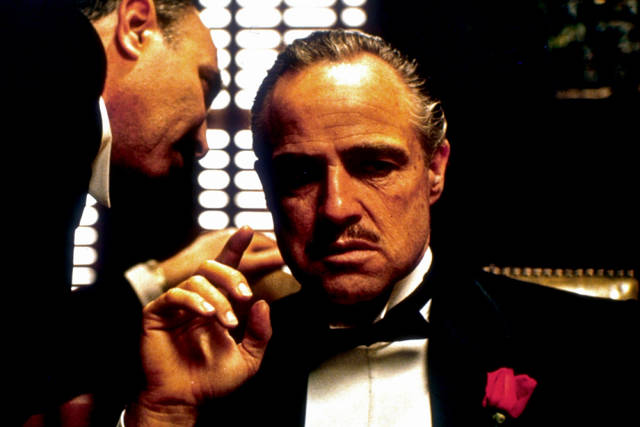
The Godfather: “Gordon Willis did the same dark filming trick on The Godfather as he had done on Klute. And now audiences accepted it, and went along with it, and every director of photography and now every director of photography of the past 40 years owes him the greatest debt, for changing the style completely--until now, of course, with the advent of digital.” 1972
Gun Crazy: A romantic example of film noir, this one features a gun-toting husband and a sharpshooting wife. 1950
Health: This Altman movie came out at the same time as King of Comedy.They were both flops, and we were both out. The age of the director was over. E.T. was a very big worldwide hit around then, and that changed the whole business of film finance. 1980
Heaven’s Gate: Scorsese was with United Artists in the '70s, with producers he describes as ”understanding and supportive.” Heaven’s Gate, one of the ambitious films UA backed at the time, was a critical and box office bomb, although its reputation has improved over the years. 1980
House of Wax: This was the first 3-D movie produced by a major American studio. It starred Vincent Price as a wax sculptor whose sourcing was, shall we say, unusual. 1953
How Green Was My Valley: “I appreciate the visual poetry of [director John] Ford’s film, like in the famous scene where Maureen O’Hara is married and the wind blows the veil on her head. It’s absolute poetry. No words. It’s all there in the image.” 1941
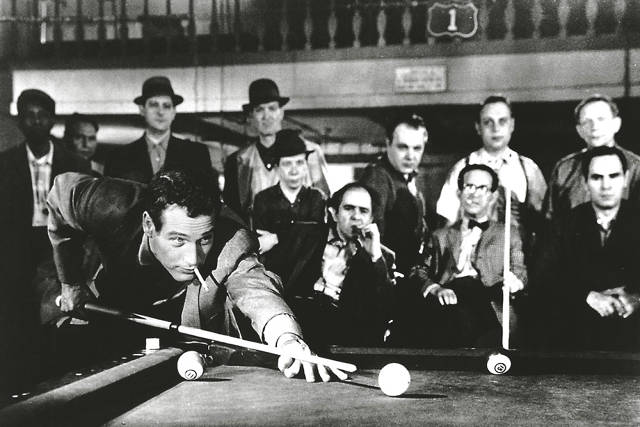
The Hustler: Scorsese liked the Paul Newman character (Eddie Felson) in this movie so much that when Newman came calling about a possible update of the movie, he agreed to direct The Color of Money. He says the movie’s box office success helped rehabilitate his career after a tough slog. 1961
I Walk Alone: One of several movies that Scorsese says clearly defined the American gangster ideal, this one stars Burt Lancaster and the smoldering Lizabeth Scott. 1948
The Infernal Cakewalk: One of the many George Melies movies that have been restored and can now be seen on DVD. Melies, a French director of silent films, is at the center of the plot of Hugo. 1903
It Happened One Night: “I didn’t think much of this Frank Capra film, until I saw it recently on the big screen. And I discovered it was a masterpiece! The body language of Claudette Colbert and Clark Gable, the way they related--it’s really quite remarkable.” 1934
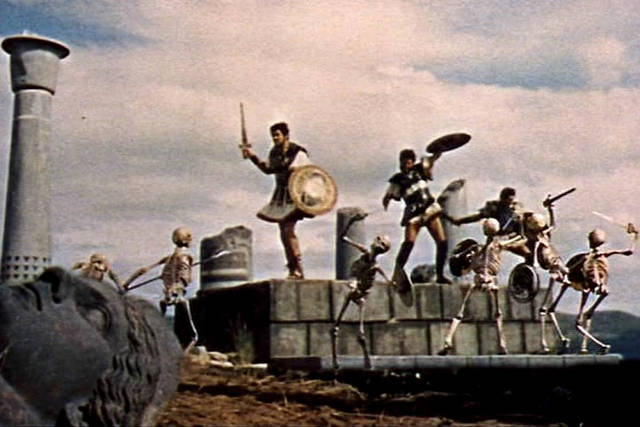
Jason and the Argonauts: As part of his film education of his daughter, Scorsese screened a bunch of Ray Harryhausen classics, including this one. 1963
Journey to Italy: “After Rossellini married Ingrid Bergman he wiped the slate clean and left Neo-Realism behind. Instead he made these intimate stories that had a great deal to do with a certain intellectual mysticism, a sense of cultural power. In Viaggio [Viaggio in Italia is the Italian title], for example, the English couple played by George Sanders and Ingrid Bergman are traveling in Naples on vacation while marriage is falling apart, but the land around them--the people the museums, and especially their visit to Pompeii, these thousands of years of culture around them--work on them like a modern miracle. The film is basically two people in a car, and that became the entire New Wave. Kids may not have seen this film, but it’s basically in all the independent film of today.” 1954
Julius Caesar: “This is another example of Orson Welles’ risk-taking, with Caesar’s crew as out-and-out gangsters.” 1953
Kansas City: “This is one of the great jazz movies ever. If you could hang on with Altman, you were going to go on one of the great rides of your lives.” 1996
Kiss Me Deadly: A great example of the noir genre that so inspired Scorsese. This one stars Ralph Meeker as detective Mike Hammer. 1955
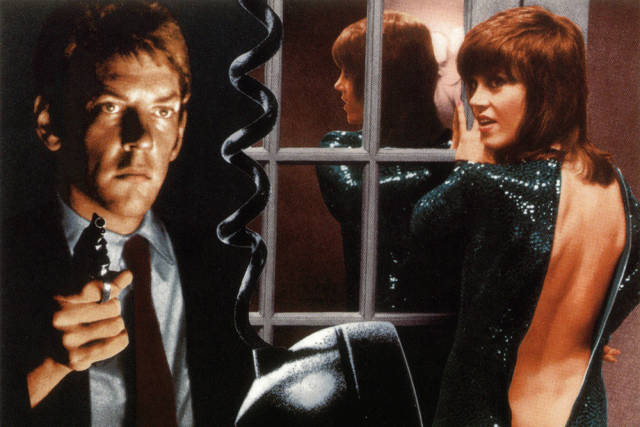
Klute: “There are movies that change the whole way in which films are made, like Klute, where Gordon Willis’s photography on the film is so textured, and, they said, too dark. At first this was alarming to people, because they’re used to a certain way things are done within the studio system. And the studio is selling a product, so they were wary of people thinking that it’s too dark.” 1971
La Terra Trema: This Lucchino Visconti film is one of the founding films of Neo-Realism. 1948
The Lady from Shanghai: “The story goes that Welles had to make a film and he was in this railway station, and there were some paperbacks there and he was talking to Harry Cohn of Columbia and he said look, I’ve got the greatest film it’s called Lady from Shanghai, which was this paperback he saw there. And then he made up this story, taking elements of Moby Dick, where he talks about the sharks, and the whole mirror sequence in that picture is unsurpassed. I don’t know if Lady is a noir, but it’s awkward, and it’s brilliant.” 1947
The Leopard: “Visconti and Rossellini and deSica were the founders of Neo-Realism. Visconti went a different way from Rossellini. He made this movie, which is one of the greatest films ever made.” 1963
Macbeth: “This was the first Welles movie I saw, on television. He shot it in 27 days. The look of it, the Celtic barbarism, the Druid priest, this was all very different from other Macbeth productions I’d seen. The use of superimpositions, the effigies at the beginning of the film--it was more like cinema than theatre. Anything Welles did, given his background in radio, was a big risk. Macbeth is an audacious film, set in Haiti of all places.” 1948
The Magic Box: “There were a number of people who felt that they had invented moving pictures. Robert Donat plays William Friese-Greene, one of those people, who’s obsessed from childhood with movement and color. Donat was a great actor. And this is a beautifully done film.” 1951
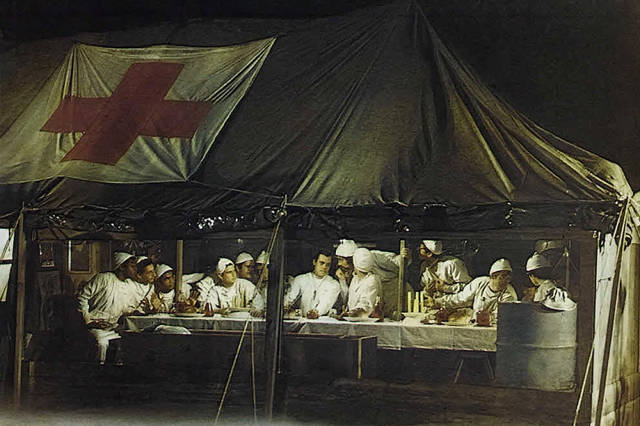
M*A*S*H: “I saw it at a press screening. That was the first football game I ever understood. Altman developed this style that came out of his life and making television movies, it was so unique--and his movies seemed to come out every two weeks.” 1972
A Matter of Life and Death: “This is another beautiful film by Powell and Pressburger, but it was made after World War II, so people said, ‘You can’t use the word ‘Death’ in the title!’ So it got changed to Stairway to Heaven, that’s what it was called in America. Now it’s A Matter of Life and Deathagain.” 1946
McCabe & Mrs. Miller: “This is an absolute masterpiece. Altman could shoot quickly and get the very best actors.” 1971
The Messiah: “Rossellini’s last film in this third period, the last film he made before he died, is this beautiful TV film on Jesus. He had planned on making more such films, like one on Karl Marx. He thought TV was the way to reach young people, to educate them. But then of course TV changed.” 1975
Midnight Cowboy: One of the great movies released by UA in its glory days, starring Dustin Hoffman and Jon Voight. 1969
Mishima: Scorsese describes this Paul Schrader film about the great Japanese author as a “masterpiece.” 1985
Mr. Deeds Goes to Town: In this Frank Capra movie, one of several that Scorsese has screened for his family, Gary Cooper plays a small-town boy who inherits a fortune--and a bevy of big-city sharpies that he can’t quite contend with. 1936
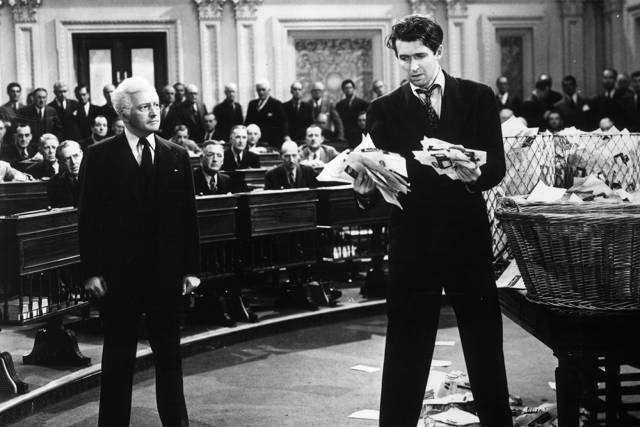
Mr. Smith Goes to Washington: Jimmy Stewart stars in this Capra movie, one of the all-time greats, which features a dramatic filibuster. 1939
Nashville: “Altman had a point of view that was uniquely American and an artistic vision to go with it. All his early work pointed to this movie.” 1975
Night and the City: “It’s the essential British noir film. Harry Fabien, played by Richard Widmark, is a two-bit hustler running through the London underworld at night, and he always oversteps, particularly with the gangster played by Herbert Lom. From the very beginning you know Fabien’s going to fail, because he’s up against a power he doesn’t understand. 1950
One, Two, Three: A classic Billy Wilder comedy, starring James Cagney as a Coca-Cola exec in West Berlin. The dialogue crackles. 1961
Othello: "It took (Orson Welles) years to finish this. There were tons of quick cuts, and there’s a wonderful sequence where two people are attacked in a Turkish bath, and it works beautifully. They’re wearing towels, and one is dispatched under the boards. It has a strange North African whiteness. It turns out that he was ready to do the sequence, and the costumes didn’t show up. So he said, let’s put it in a Turkish bath. He had the actors there! He had to shoot it!” 1952
Paisa: “This is my all-time favorite of the Rossellini films.” 1946

Peeping Tom: “Michael Powell himself gambled everything on Peeping Tomand lost in such a way that his career was really ended. The film was so shocking to some British critics and the audience because he had some sympathy, sort of, for the serial killer. And the killer had the audacity to photograph the killing of the women with a motion picture camera, which of course tied in the motion picture camera as an object of voyeurism, implicating all of us watching horror films. He was reviled. One critic said this should be flushed down the toilet. He only got one or two more movies done. He really disappeared. And now in England there are cameras watching everyone all over the street.” 1960
Pickup on South Street: Richard Widmark picks up the wrong purse in this classic noir, unwittingly setting off a series of events that come to a violent climax. 1953
The Player: “In the years before this movie, the age of the director who had a free hand came to an end. And yet Altman kept experimenting with different kinds of actors, different approaches to narrative, different equipment, until finally he hit it with this movie, which took him off onto a whole other level.” 1992
The Power and the Glory: “Directed by William K. Howard and written by Preston Sturges, it had a structure that Mankiewicz and Welles used forCitizen Kane.” 1933
Stagecoach: “Welles drew from everywhere. The ceilings and the interiors in John Ford’s classic Western inspired him for Citizen Kane.” 1939
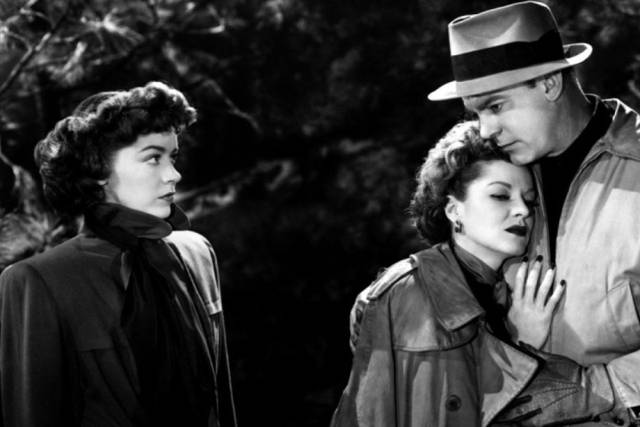
Raw Deal: NOT the Arnold Schwarzenegger pic. This one’s a noir directed by Anthony Mann, starring Dennis O’Keefe and Claire Trevor. 1948
The Red Shoes: “There’s something so rich and powerful about the story, and the use of the color, that it deeply affected me when I was 9 or 10 years old. The archness of the approach, and how serious the ballet dancers were … When they say, “The spotlight toujours on moi,” they mean it! The ballet sequence is almost like the first rock video. It’s almost as if you’re seeing what the dancer sees and hears and feels as she’s moving. It’s like in Raging Bull, where we never went outside the ring for the fighting sequences.” 1948
The Rise of Louis XIV: “In the third part of his career, Rossellini decided to make an encyclopedia, a series of didactic films. This is the first film in that series, and it’s an artistic masterpiece. He shot it in 16mm for TV, and called it anti-dramatic. Yet, I screen it once every couple of years, and when you look at frames of it on the big screen there are shots that just look like paintings. Rossellini couldn’t get away from it, he had an artist’s eye. There’s nothing like the last 10 minutes of that film to show the accumulation and the display of power. It’s not done through the sword or the speech, it’s done through the theatre he created around him with his clothes, his food, the way he eats. It’s extraordinary.” 1966
The Roaring Twenties: James Cagney and Humphrey Bogart star in this homage to the gangsters of the 1920s. It was one of the many great films made in 1939 (like Gone with the Wind, The Women, Mr. Smith Goes to Washington, Goodbye, Mr. Chips, Stagecoach and many many more). 1939
Rocco and his Brothers: “This Visconti film was also a major influence on filmmakers.” 1960
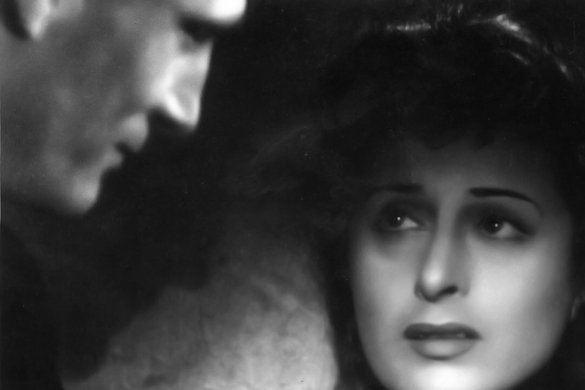
Rome, Open City: “I saw Italian movies as a 5-year-old, on a 16-inch TV my father bought. We were living in Queens. There were only three stations. One station showed Italian films on Friday night for the Italian-American community, subtitled, and the family would gather to see the films. My grandparents were there--they were the ones who moved over in 1910. So it became a ritual. [Director Roberto] Rossellini had an intellectual approach.” 1945
Secrets of the Soul: “This was a silent movie whose flashback structure was unlike anything else. Secrets of the Soul looked almost experimental.” 1912
Secrets of the Soul: “This was a silent movie whose flashback structure was unlike anything else. Secrets of the Soul looked almost experimental.” 1912
Senso: “An extraordinary film by Visconti, another Neo-Realist masterpiece.”
Shadows: “I saw Shadows at the 8th Street Playhouse [in Manhattan], and when I saw such a direct communication with the human experience, of conflict and love, it was almost as if there was no camera there at all. And I love camera positions! But this was like you were living with the people.” 1959
Shock Corridor: A wild Sam Fuller movie about a journalist who enters an insane asylum to try to break a story. 1963
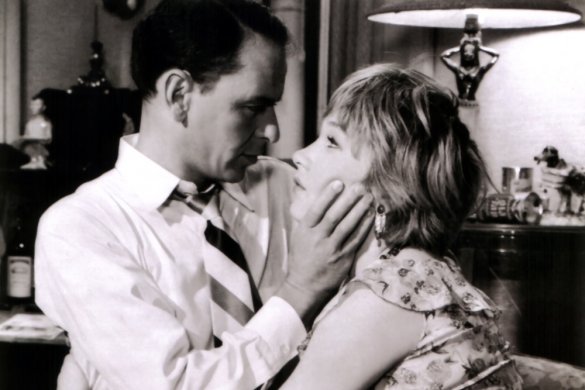
Some Came Running: This Vincent Minnelli melodrama is definitely not a musical. It’s a tough story about an alcoholic Army vet returning home. It stars Frank Sinatra, Dean Martin, and Shirley MacLaine. 1958
Stromboli: “This too was a very important film of Rossellini’s second period. Very beautiful.” [During the shooting of Stromboli, the star, Ingrid Bergman, who was married to an American dentist, got pregnant with Rossellini’s child. She divorced the dentist, and became persona non grata in America]. 1950
Sullivan’s Travels: “Billy Wilder told me, you’re only as good as your last picture. Sullivan, played by Joel McRae, is in the studio system, under that kind of pressure. He makes comedies, but one day he decides he really wants to make ‘Oh, Brother, Where Art Thou?’ He puts it all on the line to learn about the poor. The resolution of the movie is very moving.” 1941
Sweet Smell of Success: Like Ace in the Hole, this classic noir is about an unethical journalist who will stop at nothing to get his way. Burt Lancaster plays the journalist. 1957
Tales of Hoffman: “This was a great risk for Powell and Pressburger. In fact, they lost it on that. He had in mind a composed film like a piece of music, and played the music back on set during the shooting, so the actors moved in a certain way.” 1951

The Third Man: “Carroll Reed made one of those films where everything came together. It made me see, with Kane, that there was another way of interpreting stories, and another approach to the visual frame of the classical films…all those low shots, and the cuts.” 1949
T-Men: Another Anthony Mann noir with great cinematography, this one’s about Department of Treasury men breaking up a counterfeiting ring. 1947
Touch of Evil: “Welles’ radio career with the Mercury Theater made him a master of the soundtrack. Just listen to this movie--you can close your eyes and imagine everything that is happening." (Young people should listen to the radio soundtrack of War of the Worlds, which was so effective that people got in their cars and started to drive away, because they really believed that Martians were attacking.)
The Trial: “This is another film that gave us a new way of looking at films. You’re very aware of the camera, like when Anthony Perkins came running down this corridor of wooden slats and light cutting the image, blades and shafts of light, talk about paranoia!” 1962
Two Weeks in Another Town: The Vincente Minnelli movie stars Cyd Charisse, Kirk Douglas, and Edward G. Robinson. It’s a classic 1960s melodrama. 1962
Correction: Raw Deal was amended to reflect its release date of 1948.
Orson Welles directed the stage version of Julius Caesar; Joseph Mankiewicz directed the film.
Orson Welles directed the stage version of Julius Caesar; Joseph Mankiewicz directed the film.







No comments:
Post a Comment